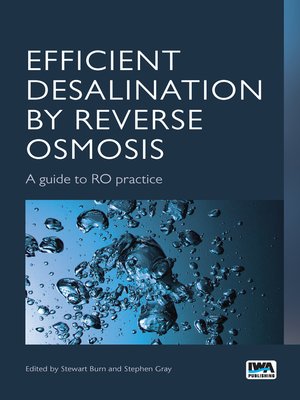
Sign up to save your library
With an OverDrive account, you can save your favorite libraries for at-a-glance information about availability. Find out more about OverDrive accounts.
Find this title in Libby, the library reading app by OverDrive.



Search for a digital library with this title
Title found at these libraries:
| Library Name | Distance |
|---|---|
| Loading... |
Early applications of desalination were small-scale plants deploying a range of technologies. However with the technological developments in Reverse Osmosis, most new plants use this technology because it has a proven history of use and low energy and capital costs compared with other available desalination technologies. This has led to the recent trend for larger seawater desalination plants in an effort to further reduce costs, and 1000 MLD seawater desalination plants are projected by 2020.
Efficient Desalination by Reverse Osmosis recognises that desalination by reverse osmosis has progressed significantly over the last decades and provides an up to date review of the state of the art for the reverse osmosis process. It covers issues that arise from desalination operations, environmental issues and ideas for research that will bring further improvements in this technology.
Efficient Desalination by Reverse Osmosis provides a complete guide to best practice from pre-treatment through to project delivery.
Editors: Stewart Burn, Visiting Scientist, CSIRO Manufacturing. Adjunct Professor, Institute of Sustainability and Innovation, Victoria University. Adjunct Professor, Department of Civil, Environmental and Chemical Engineering, RMIT University.
Stephen Gray, Director, Institute of Sustainability and Innovation, Victoria University.







